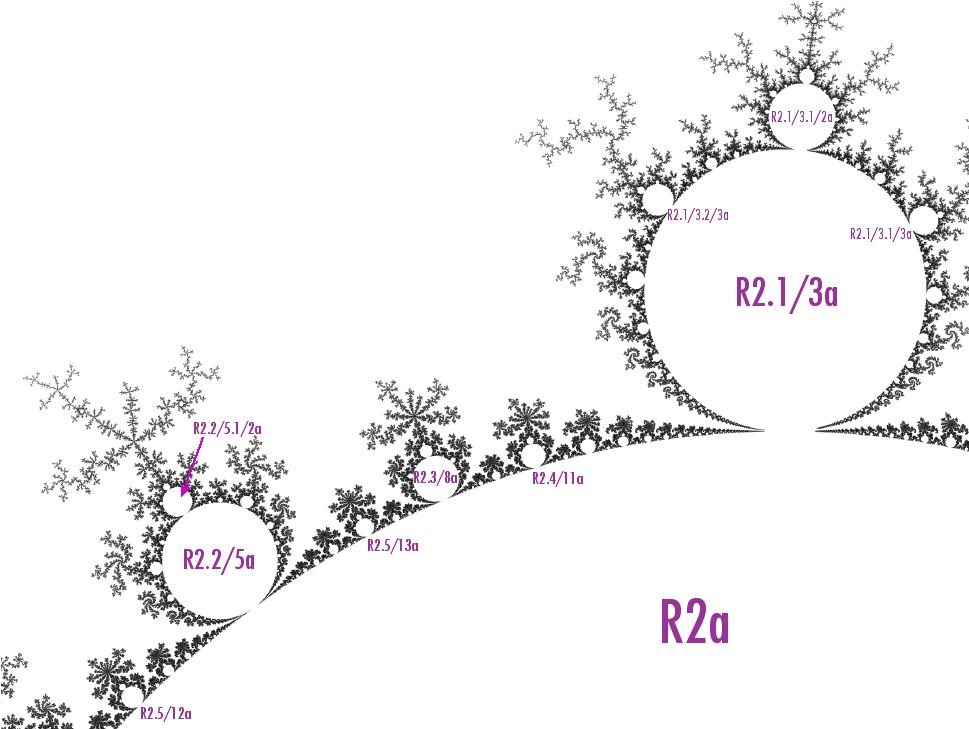Between
Robert P. Munafo, 2012 Apr 16.
A mu-atom C is said to be between two mu-atoms A and B if A, B and C all have the same parent and there is a path along the boundary of the parent from the bond of A to the bond of B that passes through the bond of C but does not pass through the parent's bond (or the parent's cusp, if the parent is a seed).
An equivalent definition is that C is between A and B if the internal angle of C is between that of A and of B.
Examples

various mu-atoms
In the figure, R2.3/8a is between R2.2/5a and R2.1/3a. It is also a neighbor of both of these larger mu-atoms, but neighbor-ness is not a requirement of between-ness. For example, R2.5/13a is between R2.5/12a and R2.4/11a, but none of these is a neighbor of the others.
There are three labeled children of R2.1/3a. We can say that R2.1/3.1/2a is between R2.1/3.2/3a and R2.1/3.1/3a because you can trace a path along the boundary of R2.1/3a from the bond point with R2.1/3.2/3a to that of R2.1/3.1/3a, and in the process you pass through the bond point of R2.1/3.1/2a. It is equivalent to state that its internal angle (the fraction 1/2) is between 2/3 and 1/3.
However we cannot say that R2.1/3.1/3a is "between" R2.1/3.1/2a and R2.1/3.2/3a. Tracing a path from R2.1/3.1/2a to R2.1/3.1/3a and then to R2.1/3.2/3a requires going through the bond point where R2.1/3a touches R2a, and that is not allowed.
revisions: 20010123 oldest on record; 20120416 add illustration
From the Mandelbrot Set Glossary and Encyclopedia, by Robert Munafo, (c) 1987-2024.
Mu-ency main page — index — recent changes — DEMZ
This page was written in the "embarrassingly readable" markup language RHTF, and was last updated on 2012 Apr 20.
 s.27
s.27